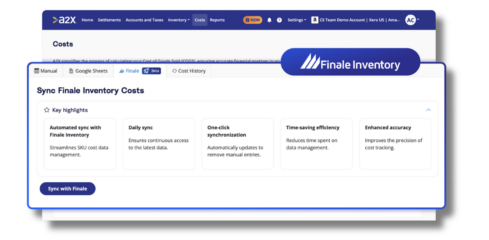10 E-commerce Best Practices for Small Businesses

You have a small business now, but you know you want it to grow. Growth means more customers, more revenue, more inventory, and more success. Before you can get to this space, however, you have to set some practices in motion that will foster natural and lasting growth. With this in mind, you’ll want to really focus on e-commerce practices that are practical, doable, and really work over time. In this post, we provide you with 10 e-commerce practices that are the best for small businesses.

Doing Business in the Digital Age
In the digital age, all businesses must remember that the Internet is not just our friend, but one of the most important and useful ways by which your business will grow. Where before work ethic and smarts were all you needed to create a thriving business, today you need a little something more to get the ball rolling. While smart business practices, a sturdy business background, and a strong work ethic will always be important, you also have to think about your online presence, brand, and aesthetic. This is doing business in the digital age.
In fact, if small businesses want to be successful, they have to look to e-commerce strategies to really put themselves on the radar of their target audience and other potential customers. To really get a small business on the map in this modern age, apply these 10 e-commerce practices to your small business model.
10 Best E-Commerce Practices for Small Business
1. Have a Mobile-Friendly Interface

When it comes to online shopping, most consumers are doing their shopping from their smartphone or tablet. Since these devices are always with us, it only makes sense that we should use them to browse, window shop, and eventually make a purchase. With this in mind, having a website that is mobile-friendly is a must because it increases the chances for sales and new customers. When a customer sees that your website is easily accessible through their device, they’re more likely to stay a while, have a look around and become a paying customer.
2. Connect With Every Potential Customer
Getting hits on your website is no easy feat. Though you invest in advertisements and campaigns to generate traffic, you need to go the extra mile to retain new visitors once you have them. The best way to reach out to a new visitor is to give them a way to stay in touch with a call to action. This can be an email sign-up page, an online booking form, a pop-up page that welcomes the visitor and gives them information on how to stay in touch. Once a visitor offers their contact information, you can bet they’ll visit again and even make a purchase in time!
3. Follow-up on Abandoned Shopping Carts

Have you ever done some online window-shopping only to abandon your shopping cart at the end? Many consumers do this for various reasons, but for your business, it means you almost made a sale. The impermanence of the online shopping cart makes it easy for them to be abandoned, but if you let things stay this way, you’re missing out on a huge opportunity. Of course, you can’t force your customers to give out their credit card information and make a purchase, but you can send them a reminder that lets them know they’ve got some great items in their cart, thus gently nudging them toward the checkout page. You can actually add an automatic feature on your website that emails customers and lets them know they still have items in their cart. From there, the rest is up to the customer. Check out these reminder tools to get started.
4. Let Shoppers Know When An Item has Been Added to Their Cart
One of the worst parts of online shopping is trying to add something to your cart multiple times only to find that it either isn’t there once they go to the car to check or that they have large quantities of the same item. The customer can get frustrated when this happens, especially because it makes what should be a simpler shopping experience much more tedious and time-consuming, which could lead to an abandoned part. What’s more, if it is difficult to add items to the shopping cart, even a gentle email reminder won’t encourage customers to come back to a forgotten cart. Fix this small but significant annoyance by adding a simple pop-up feature that confirms when a product has been added to the cart.
5. Liven Up your Landing Page with Excellent Images
A large part of online shopping has to do with your website’s aesthetic. While a lot of text can relay a lot of information, it’s also boring to read and unappealing to the eye. When it comes to e-commerce, pictures can go a long, long way. Adding images and crisp visuals to your website home page, product pages, blogs, and more can really capture a visitor’s interest as well as make a sale more likely. Look for web hosts that support image-friendly pages like Squarespace or Weebly to get started. There are also tons of sites that offer excellent images and gifs for free such as Stocksnap and Unsplash, or you can take your own shots and use them. Remember, aesthetic is key.
6. Minimalist is Best
Speaking of aesthetic, you want to think about a bit more than nice images. While images are always a good choice, you also have to think about what images you use, how many, and their layout on your site. If you have too many, it could look cluttered, if you have too little, they can look out of place. A good rule of thumb to remember is that the minimalist look is always in thanks to its clean design where both images and information are easy to access and understand. Check out some of these examples of minimalist websites to get ideas.
7. Always Remember Content is King When Developing Your Marketing Strategy

One of the most important mantras an e-commerce business must remember is, “Content is King.” Content refers to everything from infographics and images to blogs, videos, articles, and more. Show your customers that you can answer their questions, offer them useful and interesting information, and cater to their needs by creating videos, blogs, and articles that address different parts of your business. For example, if you have an online clothing store, you may want to create blogs about the latest fashion trends, great looks for fall, how-tos on accessories, and more. You could also include videos that show what a clothing item looks like on a model so that the customer can see it while it moves and breathes on a person, rather than just seeing a stationary picture. Keep in mind, however, that not all kinds of content belong on your site – so choose wisely!
8. Utilize Mobile Payment Solutions
Providing mobile payment solutions for customers makes online shopping easier than ever. When companies offer various payment options, it certainly falls under one of the best and smartest e-commerce practices. There are mobile apps you can try such as the popular PayPal that allows shoppers to complete their purchase with ease, but keep an eye out for monthly fees and maintenance that might come with them!
9. Plump Up Your Product Descriptions

Remember how content is king as one of the best e-commerce best practices for small businesses? Product descriptions certainly fall under content creation and strategy because compelling descriptions lead to more sales. When creating descriptions, ensure that you or your writers are not just describing your goods and services, but really selling them as well. Customers will likely consider adding a product to their cart if the description is rich, informative, user-friendly, and concise.
10. Extend the Navigation Bar
On most sites, the navigation bar shows the main product categories and can leave out the more specific aspects of their inventory. While you do want to keep your minimalist aesthetic alive and well, you should consider widening the navigation bar to include more categories. For example, if you sell clothing and have a “Women’s” category, you can extend this to include “Apparel,” “Accessories,” “Jewelry,” “Underwear,” etc. This variety can lead to more perusal of your wares, which can lead to more clicks, more “add-to-carts” and more sales.
These ten e-commerce best practices for small businesses can really make a difference for your small business as time goes on. When you utilize them, you can rest assured you’ll see your small business gain customers, grow and maintain a strong brand, and thrive with time.





